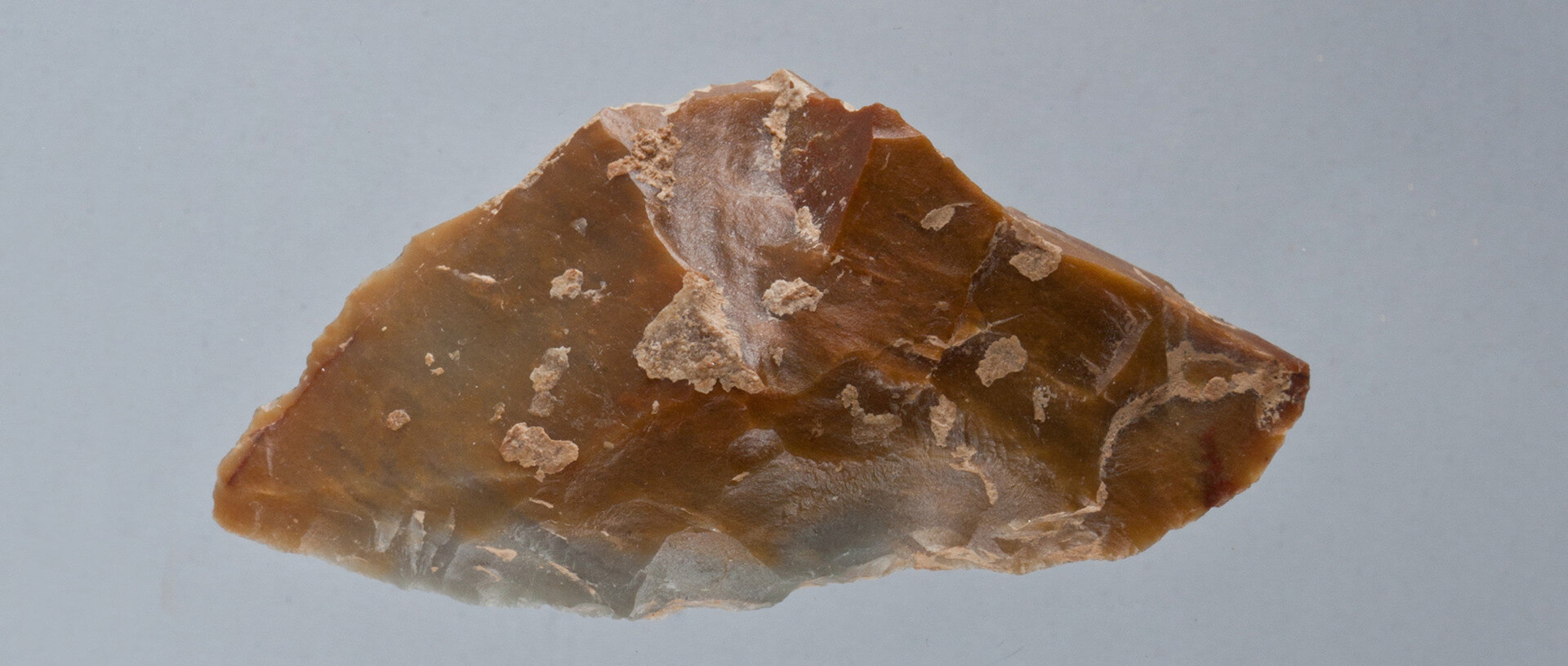For over a century archeologists have been asking themselves a question how the transition from hunters and collectors to sedentary way of life looked like. This way of life meant, apart from a series of new experiences, cultivation of the soil and getting yield. In this process which was unfolding from the eighth to the end of the sixth millennium B.C, one of the most remarkable new phenomena was the use of white-spotted flint, the powerful marker of the Neolithic process of East Europe.
On the territory of Bulgaria, southern Romania, Serbia and northern Greece, yellowish, occasionally green colour high-quality white-spotted flint was very much in use for making elongated blades with edges, which were, as a rule, modified in the same manner. The idea of a unique stylistic expression, imposed by most skillful masters of a powerful production centre, is very appealing and up-to-date. It has not yet been sufficiently confirmed in archaeology. It is not easy to find a solution for the origin of the attractive stone and its products. Some archaeologists think that it came to the territory of Serbia from far places, such as Nikopola and Ludgorja in northern Bulgaria, while others advocate local use of this material. The third group supports the stand on indirect trading from settlement to settlement, so that each theory is partly based on facts.
Why do so many different view exist? Analyses applied so far have not provided enough data on whether the flint from northern Bulgaria corresponds to raw materials on Early Neolithic sites on the Balkan penninsular and the territory of origin and vice versa, where the depositions of this material are, when artifacts in settlements are observed. When we add the terminology confusion created by archeologists, who gave it different names (Dobrudzha flint, silex balkanique, silex blonde, Flint of pre–Balkan Platform or the most appropriate and widely adopted Balkan Flint) the answer to the quetion remains hazy.
On the Neolithic Site Lepenski Vir Balkan flint constitutes two thirds of the raw stone materials. On this site, of which the greatest part of paraphernalia is preserved at the National Museum (as well as from settlements Starcevo, Tecic and Belovode) we can find all elements of the entire production process, from the raw material brought to the final looks of the tool. Where spheric flint nodules came from is not clear after four decades of research. The layers of sillicon materials of this appearance and structure have not been confirmed up to now, through repeated visits of the hinterland of Lepenski Vir and Djerdap. In central Serbia today, more precisely on Grivac and Blagotine, in the same period, Balkan flint is a valued raw material, although only one tenth has been used. The sites of its exploitation have not yet been discovered.
Although without required answers, the message of the archeologists is clear: Balkan flint is one of the most important reactions of the population of the neolithic process, it is a material of prestige. The ones who were close to the source of raw material dictated exchange and trade conditions. All the following discussions start from this fact, and archeology can assume the role of a dynamic reading text. Imagine settlements of early farmers on the map instead of dots, people meeting in order to take over stone lumps, transport along the Danube or on mountain paths, the work of masters, who, according to the model seen, make similar blades. It partly reminds us of the world we live in.
Literature:
- Gurova, M. 2008: Towards an understanding of Early Neolithic populations: a flint perspective from Bulgaria. Documenta Praehistorica 35, 111-129.
- Gurova, M. 2011: Early Neolithic site of Kovačevo: A case study of „Balkan Flint“ formal toolkit. Studia Praehistorica 14, 71-81.
Vera Bogosavljević Petrović, M.A.
Museum Consultant
Read more

